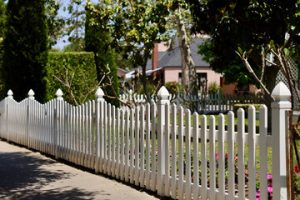Plumbing Installation Greenville is the process of installing pipes and fixtures. It requires a detailed plan and complying with codes and regulations. Professional plumbers ensure that water supply lines, drainage systems and appliances work seamlessly.

Licensed plumbers consider factors like demand, water quality and building specifications to design a system that is efficient and functional. Then they follow standard installation procedures to avoid issues like water leaks and poor performance.
When you build a new home, the plumber is responsible for delivering clean water and removing wastewater while adhering to strict building codes. The plumbing process is typically divided into three main phases: underground rough-in, aboveground rough-in and finishing or trim-out. Each of these phases requires careful planning and precise execution to ensure that the plumbing system works correctly and adheres to all regulations.
The water supply system delivers fresh drinking water to faucets and appliances throughout your home. It includes the water service pipe that conveys water from a public water main or private water source and the water-distributing pipes that deliver it to fixtures. Plumbers are responsible for the installation of these piping systems and specialized systems related to the building water supply, such as pressure reducing valves and backflow prevention devices.
Water supply systems operate at high pressure, which makes them susceptible to leaks and other problems. These systems also require frequent maintenance from professional plumbers to keep them working at their best.
During the rough-in phase, the plumber locates and marks where pipes will go in your home. This includes determining the best route for the water supply line and installing it with a proper gradient to prevent standing water and promote consistent pressure. The plumber also installs water shut-off valves and a water meter to monitor usage and track bills.
These valves allow you to turn off your water in an emergency and are essential for maintaining a safe and efficient plumbing system. They’re usually installed near the water meter and are marked with labels to make them easy to identify. The plumber can also set up sewer accommodation stubs to connect your home to the local sewage system.
The water supply system is a crucial part of any home, providing fresh drinking water and removing waste. It’s important to maintain and repair this system regularly to ensure that it performs at its peak and complies with all regulations. A faulty water supply system can lead to flooding, health issues and expensive repairs down the line. That’s why it’s essential to hire a professional plumber to handle all of your plumbing needs.
Drainage System
The drainage system in a plumbing installation is designed to take away wastewater and prevent the backflow of used water into the potable supply. It does this by leveraging the power of gravity and slope to transport water through pipes that run from the building’s drains to the sewer line or septic tank.
The design and construction of the drainage system must be carefully considered to ensure proper functionality and longevity. This system is also critical for maintaining a healthy environment and reducing the risk of disease-causing bacteria from stagnating in your home’s water.
Plumbing professionals have the skills and knowledge necessary to construct a reliable drainage system that will keep your family safe from water-related health concerns for many years to come.
Setting the Sewer Accommodation Stubs
The first step in constructing a plumbing drainage system involves establishing where the drainage lines will be installed. This process is known as marking the layout. Once the area has been marked, trenches should be dug in accordance with the planned drainage system. The trenches should be properly sized to allow for the installation of pipes without compromising their structural integrity.
Drainage channels should then be placed, with each pipe positioned at the proper height for efficient water flow. These channels should be covered with a layer of gravel and fabric for added protection and to improve water flow.
Next, the main drain lines and sewer lines should be installed. The main drain lines are responsible for collecting all wastewater from the fixtures and appliances in your home, while the sewer line connects to the municipal sewer system or septic tank for final disposal. The drain traps, also referred to as P-traps, are curved sections of pipe located beneath each fixture that hold a small amount of water, which keeps sewer gases and odors from entering the living space.
A venting system is then connected to each drain pipe, which extends to the exterior of the house and allows air into the plumbing system. This system is crucial for preventing sewer gas from building up in the living space, which can lead to unpleasant odors and other health hazards.
Fixtures
A plumbing fixture is any component that aids in the delivery of water for everyday use. These include faucets and sinks, toilets, showerheads, bathtubs, and more. They are used to perform specific tasks and should be made of durable materials to ensure longevity and function properly. They also need to be easy to clean and maintain. A plumber can help you choose the best fixtures for your home based on your style preferences and practical needs.
Choosing quality fixtures can add value to your custom home and reduce the risk of costly repairs. Consider opting for models that use less water and energy to lower your utility bills. You should also upgrade to fixtures that have a touch-free operation to save on maintenance. It is recommended to choose name brand fixtures, and a plumber should be able to recommend suitable options for your property.
Before installing new fixtures, you should turn off the water supply to your property. This will prevent accidental damage caused by water leaks. Additionally, you should read the manufacturer’s instructions and specifications for each fixture before starting installation. You should also consider hiring a professional plumber to install your new fixtures to avoid the risk of damage or injury.
Plumbing fixtures are important for your daily life, and they can be expensive to repair or replace. Using high-quality fixtures that are durable and easy to maintain can reduce the need for frequent repairs and replacements. It is also recommended to schedule regular inspections by a certified professional to catch any issues before they become severe.
In addition to maintaining proper care for your plumbing fixtures, you should regularly clean them to prevent the buildup of grime and mineral deposits. It is also recommended to replace outdated fixtures with modern, water-efficient models to reduce your utility costs and improve performance. Lastly, you should schedule regular inspections by a professional plumber to identify and address any potential problems before they escalate into major issues.
Manifolds
Plumbing manifolds are a simple solution to streamline water flow throughout a home or building. By distributing hot and cold water from one central location, they improve efficiency and create a more visually appealing system. They can be used in new builds to implement a modern plumbing system or in renovations to upgrade older homes. A professional plumber should install these devices for maximum efficiency.
The main advantage of a plumbing manifold is that it eliminates long pipe runs, which in turn reduces the chance of leaks and water damage. This is because the only connections are between the manifold and the individual appliances or fixtures, which minimizes the number of joints in the system. This also makes it easier to service the plumbing system, as there are fewer parts to worry about.
Another benefit of plumbing manifolds is that they increase water pressure and allow for a more consistent flow. This is because each outflow line to a fixture has a dedicated line, which prevents pressure drops from occurring when multiple outlets are in use. This means that showers, baths, and sinks will all be able to provide constant and high levels of water pressure.
It is also possible to easily isolate individual circuits using a plumbing manifold, which can be particularly useful in cases of emergency or maintenance work. By turning off the manifold, it is possible to shut off the supply to a specific fixture without disrupting other systems. This can be especially beneficial in healthcare settings where it is important to minimize downtime.
Plumbing manifolds can be made from a variety of materials, depending on the specific application and needs of the installation. For example, copper manifolds are a good choice for residential applications because they are durable and corrosion resistant. PEX manifolds, on the other hand, are a popular option for commercial plumbing because they are flexible and less likely to freeze.
Regardless of the material chosen, a plumbing manifold will provide a number of benefits that can make it an excellent investment for any building or home. In addition to reducing the chance of leaks and water damage, they can help save energy and money by optimizing the distribution of hot and cold water. And, when properly maintained and serviced, a plumbing manifold can last for a lifetime.



